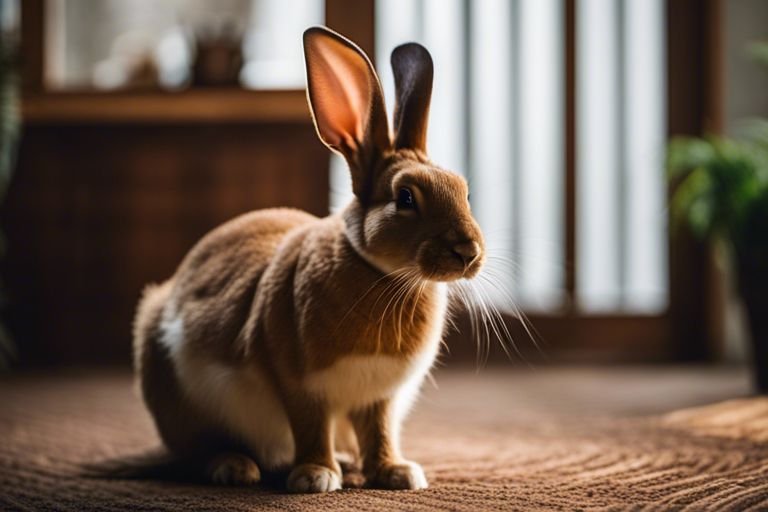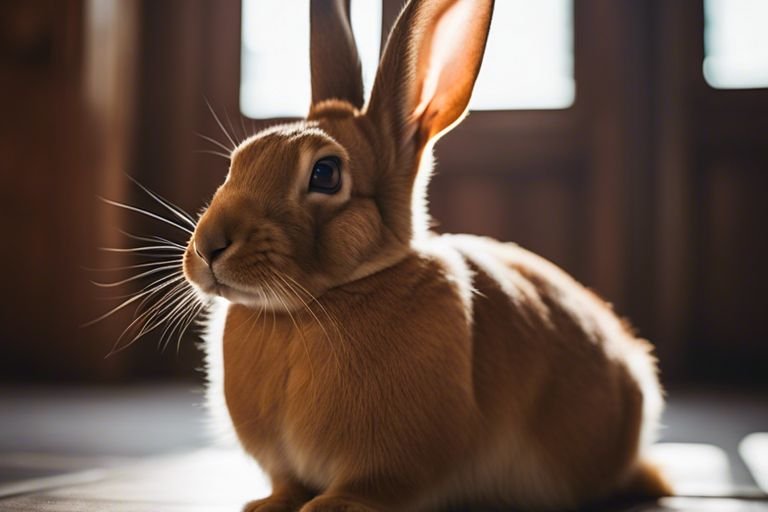Have you ever wondered if your Flemish Giant rabbit exhibits grooming behaviors? It is essential to understand that grooming is a crucial aspect of your pet’s health and well-being. In this informative blog post, we will explore the grooming habits of Flemish Giants, including why they groom, how to recognize grooming behaviors, and the significance of grooming for their overall health.
Key Takeaways:
- Flemish Giants exhibit grooming behaviors as a way to maintain cleanliness and health. This includes licking their fur and cleaning their ears and face.
- Grooming behaviors also serve as a way for Flemish Giants to establish social hierarchy and bond with other rabbits in their group.
- Regular grooming is essential for the overall well-being of Flemish Giants, helping to prevent matting and the formation of hairballs.
- Flemish Giants may groom themselves more frequently during shedding season to remove excess fur and aid in the process of shedding.
- Observing grooming behaviors in Flemish Giants helps in monitoring their health and detecting any potential issues such as skin infections or parasites.
Flemish Giant Temperament and Socialization
Assuming you are considering adding a Flemish Giant to your family, understanding their temperament and socialization needs is crucial. As one of the largest rabbit breeds, these gentle giants have a calm and docile nature. They are known for being affectionate and social animals when properly socialized, making them great companions for individuals and families alike.
Sociability with Humans and Pets
When properly socialized from a young age, Flemish Giants can be incredibly social and affectionate with both humans and other pets in the household. They are known for forming strong bonds with their owners, often seeking out attention and interaction. However, it is important to introduce them to other pets slowly and carefully to ensure a positive and harmonious relationship.
Child-Friendliness and Pet Interaction
Due to their calm and gentle nature, Flemish Giants are typically great with children, making them an excellent choice for families. Their large size can sometimes be intimidating to small children, so it’s important to teach proper handling techniques to ensure both the rabbit and the child are safe. Additionally, supervising any interactions between the rabbit and other pets in the household is essential to prevent any potential conflicts.
Remember, proper socialization and handling are key to ensuring a well-behaved and social Flemish Giant. By understanding their temperament and socialization needs, you can create a positive environment for your rabbit to thrive in. Consider these factors as you welcome a Flemish Giant into your home and make them a part of your family.
Grooming Habits of Flemish Giants
However, as a Flemish Giant rabbit owner, you may be wondering about the grooming habits of this large and majestic breed. Luckily, Flemish Giants are known for their diligent grooming behaviors, both for themselves and their fellow rabbits.
Self-Grooming Routines
When it comes to self-grooming, Flemish Giants are meticulous in keeping themselves clean and groomed. They often spend a significant amount of time each day grooming their fur, which not only helps them to maintain a healthy coat but also provides a soothing and comforting ritual for them. You may notice your Flemish Giant using their paws to groom themselves, and they may even use their teeth to remove any loose fur or debris from their coat.
Social Grooming and Bonding
In addition to their self-grooming habits, Flemish Giants also exhibit social grooming behaviors. This is particularly evident in bonded pairs or groups of rabbits, where they will groom each other as a form of bonding and social interaction. You may observe your Flemish Giants grooming one another, which not only helps to strengthen their bond but also reinforces their social hierarchy within the group.
By understanding the grooming habits of Flemish Giants, you can better care for and appreciate the unique behaviors of these remarkable rabbits. Whether they are grooming themselves or engaging in social grooming with their companions, these behaviors are essential for their overall well-being and happiness. As you continue to observe and interact with your Flemish Giants, you will gain a deeper understanding of their grooming routines and the important role they play in their lives.
Influences on Grooming Behavior
Despite being known for their large size and gentle nature, Flemish Giant rabbits are also notable for their grooming behaviors. Various factors can influence the extent to which these rabbits engage in grooming activities, including their energy levels, exercise requirements, and the impact of neutering on grooming activities.
Energy Levels and Exercise Requirements
When it comes to grooming behaviors, it’s important to consider the energy levels and exercise requirements of Flemish Giant rabbits. These rabbits are known for their large size and require plenty of space to run, play, and exercise. Providing ample space and regular exercise opportunities for your Flemish Giant can lead to lower stress levels and a happier rabbit. This, in turn, can positively impact their grooming behaviors and overall well-being.
Impact of Neutering on Grooming Activities
Another key factor in grooming behavior is the impact of neutering on Flemish Giant rabbits. Neutering can have a significant impact on a rabbit’s behavior, including grooming activities. Neutered rabbits may exhibit different grooming behaviors compared to unneutered rabbits. Additionally, neutering can also have positive impacts on their health and overall behavior, including potential reductions in aggressive tendencies and territorial behaviors.

Health and Nutrition’s Role in Grooming
To ensure that your Flemish Giant exhibits proper grooming behaviors, it is crucial to consider the role of health and nutrition. Proper care in these areas can significantly impact your rabbit’s grooming habits and overall well-being.
Nutritional Considerations
When it comes to grooming, nutrition plays a vital role in your Flemish Giant’s well-being. A balanced diet rich in high-quality hay, fresh vegetables, and a small amount of pellets is essential for maintaining a healthy coat and skin. Ensuring that your rabbit is receiving the right nutrients will help prevent any potential grooming issues related to diet deficiencies.
The Correlation Between Health and Grooming
Your rabbit’s overall health directly influences its grooming habits. A healthy rabbit is more likely to exhibit regular grooming behaviors, keeping its coat clean and free of tangles. However, if your rabbit is experiencing any health issues, such as dental problems or obesity, it may be less inclined to groom itself properly. As a responsible owner, you must prioritize your rabbit’s health to promote regular grooming habits.
Care and Maintenance of Flemish Giants
Your Flemish Giant requires regular care and maintenance to ensure their overall health and well-being. From shedding and coat health to grooming techniques and tools, it’s important to stay on top of their grooming routine to keep them looking and feeling their best.
Shedding and Coat Health
When it comes to your Flemish Giant’s coat, shedding is a natural process that can occur throughout the year. Regular brushing is essential to help remove loose fur and prevent matting, which can lead to discomfort and even skin issues. It’s important to pay special attention to the undercoat, as it can easily become tangled and cause your rabbit discomfort. To maintain your rabbit’s coat health, be sure to groom them at least once a week, or more frequently during peak shedding periods. This not only helps keep their coat in good condition, but also reduces the amount of fur they may ingest during self-grooming, which can lead to digestive issues.
Grooming Techniques and Tools
When grooming your Flemish Giant, it’s important to use the right tools to ensure a gentle and effective grooming experience. A high-quality slicker brush and a wide-toothed comb are ideal for removing loose fur and preventing matting. Additionally, a gentle grooming glove can also be helpful for removing loose fur and keeping your rabbit’s coat looking its best. Take the time to bond with your rabbit during grooming sessions, as this can help reduce their stress and make the experience more enjoyable for both of you. Remember to check for any signs of parasites, such as mites or fleas, and consult with a veterinarian if necessary.
By maintaining a regular grooming routine and using the appropriate tools, you can help keep your Flemish Giant looking and feeling their best. Regular grooming not only supports your rabbit’s physical health, but also provides an opportunity for bonding and monitoring their overall well-being. So, grab your grooming supplies and give your Flemish Giant the TLC they deserve!
Behavioral Concerns and Solutions
After observing your Flemish Giant for a while, you may notice certain grooming behaviors that seem unusual or excessive. It’s important to address these concerns as they can indicate an underlying issue that needs to be resolved. In this section, we’ll discuss some common behavioral concerns related to grooming and provide solutions to help you address them effectively.
Addressing Unusual Grooming Patterns
If you notice that your Flemish Giant is exhibiting unusual grooming patterns such as over-grooming or self-mutilation, it could be a sign of stress, boredom, or an underlying health issue. It’s important to take note of these patterns and consult with a veterinarian to rule out any medical problems. Additionally, providing environmental enrichment, such as toys and hiding spots, can help alleviate boredom and reduce stress. Keeping a close eye on your rabbit’s grooming habits and taking action early on can prevent more serious behavioral issues from developing.
The Role of Positive Reinforcement Training
Positive reinforcement training can be an effective way to address grooming-related behavioral concerns in Flemish Giants. By using rewards such as treats and praise, you can encourage desirable grooming behaviors and discourage undesirable ones. For example, if your rabbit is over-grooming, you can redirect their attention to a chew toy and reward them when they engage with it instead. Consistent and positive reinforcement can help modify your rabbit’s grooming habits in a gentle and effective manner.
The Grooming Behaviors of Flemish Giants
The grooming behaviors of Flemish Giants are an important aspect of their social and physical well-being. You have learned that these large rabbits often exhibit grooming behaviors as a way to maintain their fur, remove debris, and establish social bonds with their fellow rabbits. By understanding and recognizing these grooming behaviors, you can better care for and understand the needs of your Flemish Giant rabbits. Providing opportunities for grooming, such as providing access to grooming tools and social interaction with other rabbits, is essential for their overall health and happiness. Emphasizing the importance of grooming in the care of Flemish Giants can lead to better welfare and a stronger bond between you and your pets.
FAQ
Q: Do Flemish Giants exhibit grooming behaviors?
A: Yes, Flemish Giants are known to exhibit grooming behaviors as a way of maintaining their fur and overall hygiene. They often use their paws and tongue to groom themselves, and may also groom other rabbits in their social group.
Q: Why is grooming important for Flemish Giants?
A: Grooming is essential for Flemish Giants to remove dirt, parasites, and loose fur from their coats. It also helps to distribute natural oils produced by their skin, which keeps their fur healthy and shiny. Additionally, grooming can strengthen social bonds between rabbits in a group.
Q: How can I support grooming behaviors in my Flemish Giant?
A: Providing a clean and spacious living environment for your Flemish Giant is crucial in supporting their grooming behaviors. Regularly grooming your rabbit with a soft brush can also help them maintain their fur and prevent matting. Additionally, ensuring a healthy diet and regular veterinary check-ups can contribute to overall coat health and grooming abilities.
